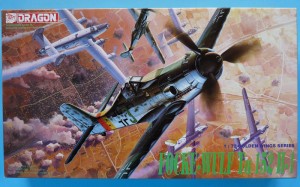
This aircraft is – to me at least – at the top of the evolution pyramid amongst single-engined piston fighters. Years of design honing and fine-tuning have resulted in this series of the fastest, most maneuverable, most heavily-armed, the highest-flying and the most technologically advanced aircraft to date (1945). I was happy to get the kit and am more than willing to build it at first opportunity.
And it is rather good I have to say. First released in 1992 it features 90 parts according to my counting (78 in grey plastic, 2 transparent and 10 PE). Beyond the actual Ta-152 airframe parts there is a detailed engine bay (with engine and cannon), which could be posed open. Some have gone so far in criticizing the kit as to call it “over-engineered”, and hail the Aoshima H-0 and H-1 sets (which are based off the Dragon offering) as a better solution due to the small number of parts (about half the DML count) and lower price. I personally wouldn’t replace my kit for the Japanese one, and the pics below will tell you why.
First we have sprue A, which holds the main airframe components – wings, fuselage, tail planes, and notably – a WING SPAR. To say that at this span the latter is important to the structural integrity of the model would be an understatement.
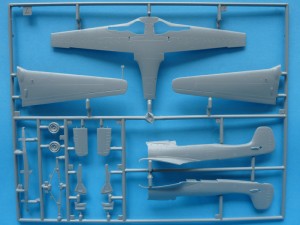
Notice the large vertical stabilizer, the entirely new wing, bulged gear bays, the u/c leg position indicator on the upper wing, and the fine engraving throughout. Check out the numerous hatches on the lower wing, the details on the u/c cover insides and the motor frames…
Good impressions on the other side as well. I am only baffled at the smooth tires, but that’s another story.
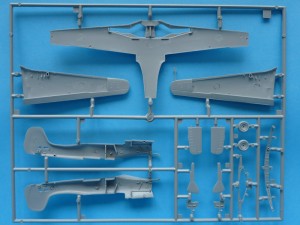
Sprues B and C are actually molded as a single tree. I’d gather the missing piece of the puzzle are the engine covers and radiator cowl for the C version.
Top right – cockpit details, undercarriage and exhausts. Top left – engine bay details, including an MK-108 30mm cannon (part 45).
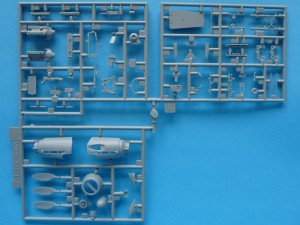
Sprue C has the engine and radiator cowlings, air compressor intake and the prop/spinner assembly. Notable are the raised instrument panel detail, the delicate u/c details, and the separate parts for the oh-so-oftenly-molded-as-one-detail tailwheel.
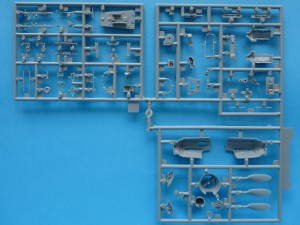
Fine work on the engine block as well. Cowls – especially flaps – would need some additional thinning if one intends to display the engine, but that shouldn’t be much of a problem. Dragon has molded a recessed line on the inside of the cowling where the hinged panels have to be cut out. The pins in the intake should be easy enough to remove.
My only personal grudge is with the oleo struts on the gear legs – they are fairly extended, which calls for either shortening them or displaying the aircraft in the air…
Two transparent parts are available – molding is reasonably good, no apparent scratches or distortion.
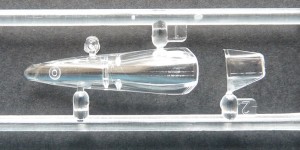
PE fret contains the deck behind the pilot seat, the usual antennae and a detail for the head armor.
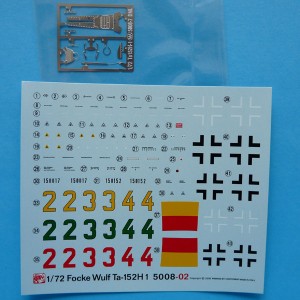
Decals provide a solid number of stencils and an ID band for JG 301. Two serial numbers are included – 150017 and 150152 – which might explain the different cross styles (a total of 10 crosses are on the sheet with 6 needed to complete an aircraft). However there’s only a generic paint diagram in the instructions (instead of two separate ones), and no units or individual aircraft are indicated.
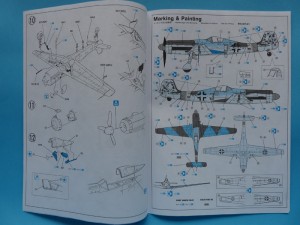
Paints are Gunze or Italeri (maybe MM?).
Overall – I’d say an excellent model of a “too little – too late” aircraft. As a fan of German late-war designs I feel this really is a great addition to my model collection and will try to show you the process of building it in the coming months.